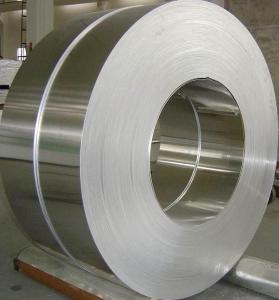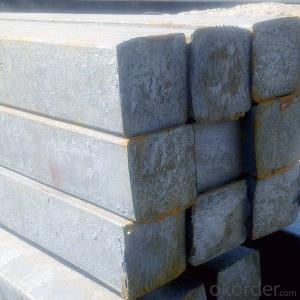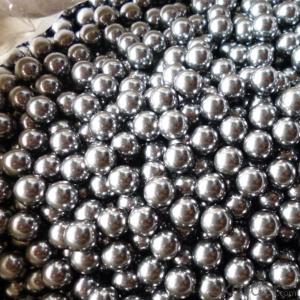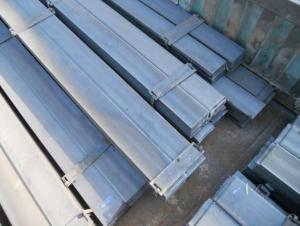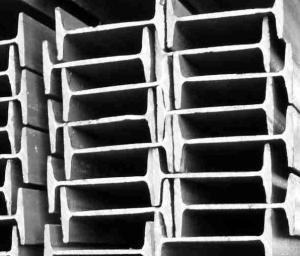High Quality Pile
- Loading Port:
- China Main Port
- Payment Terms:
- TT OR LC
- Min Order Qty:
- -
- Supply Capability:
- -
OKorder Service Pledge
Quality Product, Order Online Tracking, Timely Delivery
OKorder Financial Service
Credit Rating, Credit Services, Credit Purchasing
You Might Also Like
We mainly engaged in manufacturing PHC concrete piles with diameters of Φ600~Φ1400 for wharf. Every year, the company produces various types of concrete piles of over 150,000 meters with single-section pile of 41meter long and annual gross output value up to RMB 600 million.
With years’ manufacturing experience of concrete piles and a great number of excellent technological and management talents, the company persists in technical innovation and research of new products. The large-diameter PHC concrete piles with merits such as good bending strength, large bearing capacity, fine resistance against the external force and so forth have been the preferential choice of structural materials for foundation engineering construction such as large ports, wharfs, shipyard, huge bridges, high-rise buildings, heavy factories, high-speed railway, etc.
The company holds the operation philosophy of “honest, practical and harmonious for win-win” and persists in the quality guideline of “constant improvement with prohibition of non-conforming products into construction site” to provide you sincerely with superior products and service.
- Q:How are steel rails protected against track geometry irregularities?
- Steel rails are protected against track geometry irregularities through regular inspection and maintenance. This includes monitoring the alignment, elevation, and curvature of the tracks to ensure they meet the required standards. Any deviations or irregularities detected during inspections are promptly addressed through corrective measures such as realignment or resurfacing. Additionally, advanced technologies such as track geometry cars and laser scanning are employed to identify and rectify any potential issues before they escalate. These proactive measures help to maintain the integrity and safety of the rail infrastructure, ensuring smooth and reliable train operations.
- Q:Can steel rails be used for agricultural or mining tramways?
- Yes, steel rails can be used for agricultural or mining tramways. Steel rails are commonly used in these industries due to their durability, strength, and ability to withstand heavy loads. They provide a stable and reliable track system for transporting equipment, materials, and products efficiently.
- Q:How are steel rebars anchored into existing concrete?
- Steel rebars are typically anchored into existing concrete by using different methods such as epoxy adhesive, mechanical anchoring systems, or by simply embedding the rebars into the fresh concrete during construction.
- Q:What are the different types of steel cables and their uses?
- There are several types of steel cables, each designed for specific purposes. Some common types include galvanized steel cables, which are corrosion-resistant and often used for outdoor applications like fences and suspension bridges. Stainless steel cables are highly resistant to rust and often used in marine environments, as well as in construction and architecture. Aircraft cables, made of high-strength carbon steel, are used in aviation and heavy lifting applications. Lastly, wire ropes, composed of multiple steel wires twisted together, are utilized in various industries for lifting, towing, and rigging purposes.
- Q:What is the hardness of stainless steel sheets?
- The hardness of stainless steel sheets can vary depending on the specific grade and manufacturing process. Generally, stainless steel sheets are known for their high hardness and strength. The most common grades used in industrial applications, such as 304 and 316, have a hardness range of 70-90 HRB (Rockwell hardness B scale) or 150-200 HV (Vickers hardness). However, there are also specialized stainless steel alloys that can have even higher hardness values, such as precipitation-hardened grades like 17-4 PH, which can reach hardness levels of 30-40 HRC (Rockwell hardness C scale). To determine the exact hardness of a specific stainless steel sheet, it is necessary to consult the manufacturer's specifications or perform hardness testing using appropriate methods and equipment.
- Q:Can steel I-beams be used for residential roof structures?
- Yes, steel I-beams can be used for residential roof structures. In fact, steel I-beams are commonly used in residential construction as they offer several advantages over other materials. Firstly, steel I-beams provide excellent strength and structural integrity, allowing for longer spans and larger open floor plans without the need for additional support columns. This makes them ideal for creating open, airy spaces in residential buildings. Additionally, steel I-beams are highly durable and resistant to fire, rot, and pests, making them a long-lasting and low-maintenance option for residential roof structures. They also have a high load-bearing capacity, which is important for supporting the weight of the roof and any additional loads such as snow or equipment. Furthermore, steel I-beams are versatile and can be easily customized to fit specific design requirements. They can be fabricated in various sizes and shapes, allowing for flexibility in design and accommodating different architectural styles. However, it's worth noting that using steel I-beams for residential roof structures may be more expensive compared to other materials such as wood. Additionally, proper engineering and design considerations are necessary to ensure the beams are properly supported and integrated into the overall roof system. Consulting with a structural engineer or an architect experienced in steel construction is highly recommended to ensure the best results.
- Q:What is the process of anchoring steel rebars in concrete?
- The process of anchoring steel rebars in concrete involves several steps to ensure a strong and secure bond between the rebar and the concrete. First, the concrete surface where the rebar will be anchored needs to be prepared. This typically involves cleaning the surface to remove any dirt, dust, or debris that could interfere with the bonding process. It is also important to ensure that the concrete is fully cured and has reached the required strength before proceeding. Next, the rebar is cut to the desired length and shape according to the construction plans. It is important to follow the specified dimensions and placement requirements to ensure proper reinforcement and structural integrity. After the rebar is prepared, it is usually placed in the desired position within the concrete formwork. The rebar should be positioned at the correct depth and spacing as specified by the design. This is typically accomplished by using plastic or metal chairs, spacers, or tie wire to hold the rebar in place. Once the rebar is properly positioned, the next step is to secure it to the concrete. One common method of anchoring the rebar is by using mechanical anchors or rebar couplers. These devices are designed to create a strong connection between the rebar and the concrete by utilizing various mechanisms such as threading, crimping, or expansion. Alternatively, another method of anchoring the rebar is by using adhesive or cementitious grouts. These materials are applied to the rebar and then inserted into pre-drilled holes in the concrete. The adhesive or grout helps to bond the rebar to the concrete and provides additional reinforcement. Finally, after the rebar is anchored, the concrete is poured or placed around it. The concrete should be properly consolidated to ensure that it fully surrounds and encases the rebar. This can be achieved through techniques such as vibrating the concrete or using specialized equipment. Overall, the process of anchoring steel rebars in concrete involves careful planning, preparation, and execution to ensure a reliable and durable bond between the rebar and the concrete. Following industry standards and design specifications is crucial to achieve the desired structural strength and integrity.
- Q:What are the differences between 304 and 316 stainless steel bars?
- 304 and 316 stainless steel bars are extensively used in various industries, but they possess distinct dissimilarities that determine their suitability for specific applications. To begin with, the primary disparity between 304 and 316 stainless steel bars is their composition. 304 stainless steel comprises 18% chromium and 8% nickel, whereas 316 stainless steel contains 16% chromium, 10% nickel, and 2% molybdenum. The presence of additional molybdenum in 316 stainless steel enhances its resistance to corrosion and pitting in comparison to 304 stainless steel. Additionally, owing to its higher molybdenum content, 316 stainless steel bars exhibit superior overall corrosion resistance, making them ideal for usage in marine environments or situations where exposure to chloride solutions or corrosive chemicals is common. Conversely, although 304 stainless steel bars offer good corrosion resistance, they may not be as resilient as 316 stainless steel in aggressive or high-chloride environments. Furthermore, the dissimilarity in composition affects the mechanical properties of the two stainless steel grades. 316 stainless steel bars possess higher tensile strength and yield strength in contrast to 304 stainless steel bars. Consequently, 316 stainless steel bars are more suitable for applications requiring greater strength and durability, such as structural components or heavy-duty equipment. Lastly, the cost distinction between 304 and 316 stainless steel bars should also be taken into account. Due to its higher molybdenum content and enhanced corrosion resistance, 316 stainless steel bars generally have a higher price compared to 304 stainless steel bars. Hence, the choice between the two grades will depend on the project's budget and specific requirements. In conclusion, the significant disparities between 304 and 316 stainless steel bars lie in their composition, corrosion resistance, mechanical properties, and cost. Acquiring an understanding of these distinctions is crucial in selecting the appropriate stainless steel grade for a particular application, ensuring optimal performance and durability.
- Q:Can steel sheets be used for elevator cabins?
- Yes, steel sheets can be used for elevator cabins. Steel is a common material choice for elevator cabins due to its strength, durability, and fire resistance properties. Steel sheets can be fabricated to create a sleek and modern look for elevator cabins, and they can also be easily customized to fit specific design requirements. Additionally, steel is a cost-effective option for elevator cabins as it is readily available and has a long lifespan.
- Q:How do steel rails handle the effects of heavy impacts (e.g., derailments, collisions)?
- Steel rails are specifically designed to handle the effects of heavy impacts such as derailments and collisions. They possess excellent mechanical properties, including high strength and toughness, which allow them to absorb and distribute the impact energy. The steel used in rail construction is often reinforced with alloys to enhance its resistance to deformation and cracking. Additionally, steel rails are installed on robust sleepers and ballast systems, which provide stability and support to further mitigate the effects of heavy impacts. Overall, steel rails are engineered to withstand and minimize the damage caused by such events, ensuring the safety and reliability of railway systems.
1. Manufacturer Overview |
|
|---|---|
| Location | |
| Year Established | |
| Annual Output Value | |
| Main Markets | |
| Company Certifications | |
2. Manufacturer Certificates |
|
|---|---|
| a) Certification Name | |
| Range | |
| Reference | |
| Validity Period | |
3. Manufacturer Capability |
|
|---|---|
| a)Trade Capacity | |
| Nearest Port | |
| Export Percentage | |
| No.of Employees in Trade Department | |
| Language Spoken: | |
| b)Factory Information | |
| Factory Size: | |
| No. of Production Lines | |
| Contract Manufacturing | |
| Product Price Range | |
Send your message to us
High Quality Pile
- Loading Port:
- China Main Port
- Payment Terms:
- TT OR LC
- Min Order Qty:
- -
- Supply Capability:
- -
OKorder Service Pledge
Quality Product, Order Online Tracking, Timely Delivery
OKorder Financial Service
Credit Rating, Credit Services, Credit Purchasing
Similar products
New products
Hot products
Related keywords









